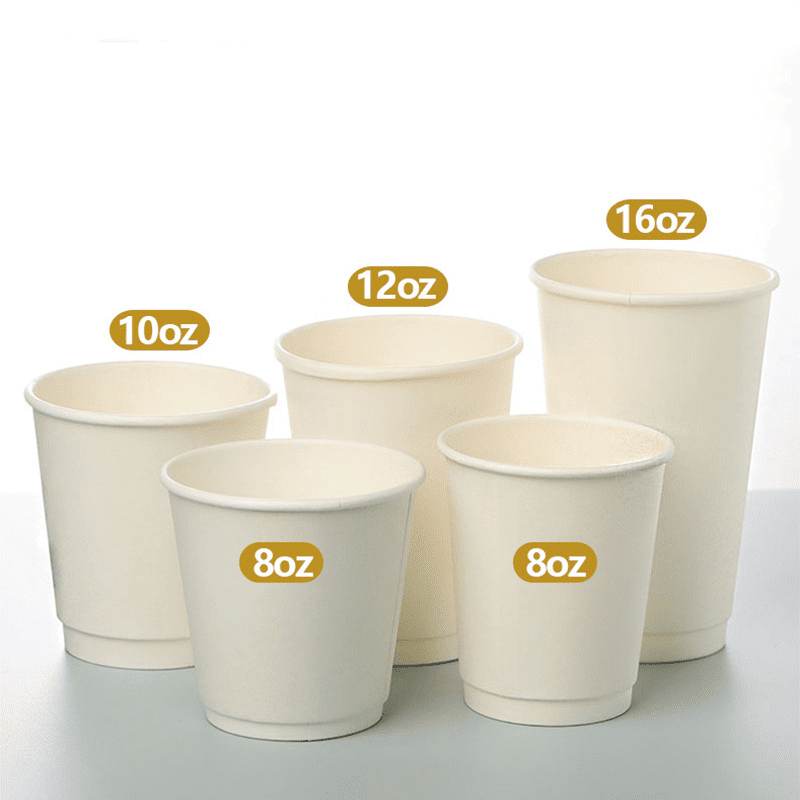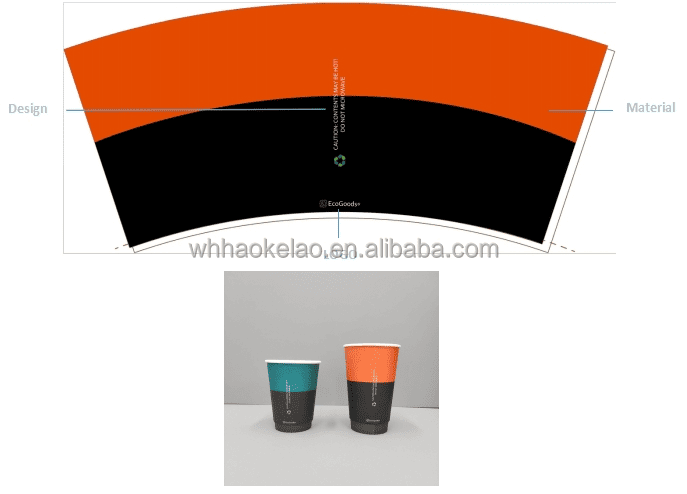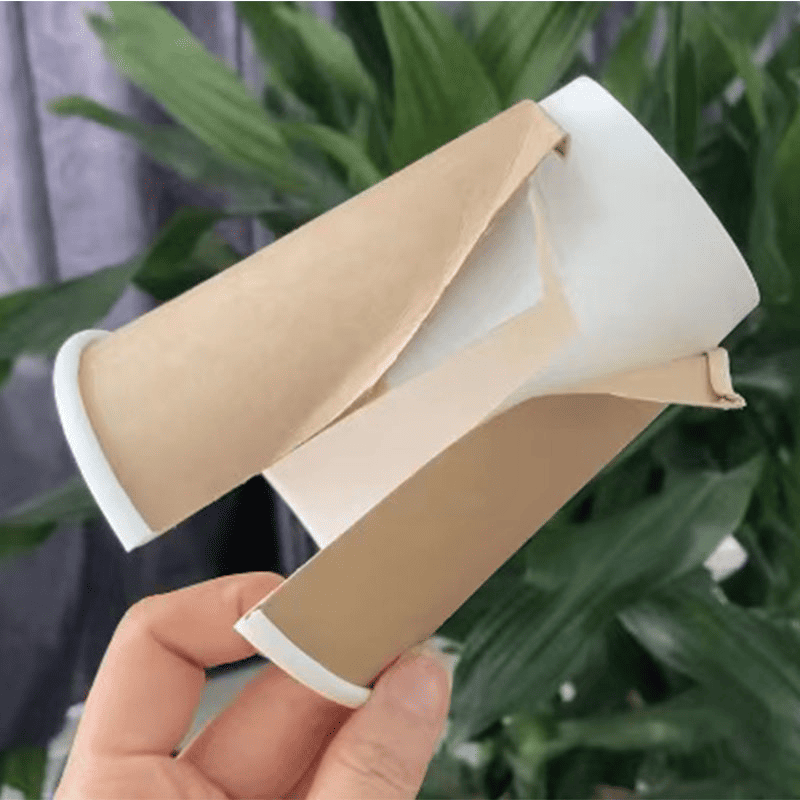A paper cup looks simple, but it hides layers of engineering that keep your coffee off your clothes and in your hands.
A paper cup stays waterproof thanks to food-grade paper1, a water-resistant coating, precise sealing, and strict quality control during manufacturing.

Many people assume paper dissolves quickly in water. That’s true for plain paper. But a paper cup is engineered to handle heat, moisture, and handling without breaking down.
What materials are used in paper cups?
The base material matters more than most people realize.
Most paper cups are made from food‑grade virgin wood pulp paper, with an inner waterproof coating2 made of PE for cost efficiency or PLA for eco-friendly branding3.

Food‑grade paper ensures zero harmful migration into drinks. Stiffness helps it keep its shape. The coating stops liquid from touching the paper fibers, preventing swelling.
| Paper Type | Coating | Benefits | Best For |
|---|---|---|---|
| Food‑grade paper | PE | Low cost, strong liquid barrier | Hot and cold drinks |
| Food‑grade paper | PLA | Plant‑based, compostable | Eco‑friendly brands |
I worked with a café owner who switched from PE to PLA‑coated cups. They saw better customer approval and met local plastic regulations. The small cost increase became a strong eco-marketing point.
Why don’t paper cups get wet or soft?
Ordinary paper falls apart in water. Cup paper does not.
The waterproof coating2 blocks liquid from reaching the fibers, while heat sealing4 keeps the coating bonded to the paper.

In production, heat sealing4 bonds the coating to the paper’s surface. Many high-end cups use a double paper wall to trap heat and improve strength. The European Packaging Association tested cups with double PE or PLA coatings—they held drinks at 80 °C+ for over two hours without leaking or softening.
| Feature | Effect |
|---|---|
| Waterproof coating | Stops liquid soaking into the paper |
| Heat sealing | Keeps the coating secure |
| Double‑wall design | Improves insulation and stiffness |
I remember carrying a double‑wall latte cup for over an hour at a street festival. My hand stayed comfortable, and the cup was still firm when empty.
Why don’t paper cups leak?
Leak protection starts with precise manufacturing5.
A cup is shaped from one paper piece, with seams sealed by heat pressing and edges rolled to prevent drips and gaps.

The rim is rolled for a tight lid fit and drip control. The cup bottom is sealed by pressing the coating layers together into a solid, watertight joint. Top suppliers test every batch with water-fill or vacuum tests.
| Process Step | Purpose |
|---|---|
| Rolled rim | Prevent drips at edge |
| Heat‑sealed base | Keep bottom watertight |
| Leak tests | Guarantee consistency |
One tea chain I work with once bought cheaper cups without testing. Several orders leaked during delivery. The damage to reputation was instant, and they switched back to certified cups.
Why do coffee shops prefer paper cups?
It’s not just about holding coffee—it’s about mobility, branding3, and hygiene.
Paper cups are portable, safe for food, fully brandable, and now widely available in eco‑friendly PLA-lined versions.

They match grab-and-go lifestyles. Each branded cup works like a walking ad across the city. Being single use, they remove the need for washing and prevent cross‑contamination. Coffee shops can choose between single‑wall or double‑wall cups, or add sleeves for hot drinks.
With takeaway coffee sales hitting $41 billion in 2023 and set to grow 4.8% yearly until 2027, paper cups remain core to café marketing and operations in plastic‑ban markets.
I always tell clients: your paper cup is part of the drink experience and your brand voice. Choose materials and coatings that customers feel good about.
Conclusion
Paper cups are waterproof because of food‑grade paper, moisture‑blocking coatings, precise sealing, and tough quality checks. Coffee shops love them for portability, safety, branding3, and eco compliance.
1.Understanding food-grade paper is crucial for ensuring safety and quality in food packaging, especially for beverages. ↩
2.Explore how waterproof coatings enhance the functionality of paper cups, making them ideal for hot and cold beverages. ↩
3.Explore the marketing potential of branded paper cups and their impact on customer engagement. ↩
4.Learn about heat sealing technology and its role in creating strong, leak-proof paper cups. ↩
5.Understanding the importance of precision in manufacturing can help ensure quality and prevent leaks. ↩